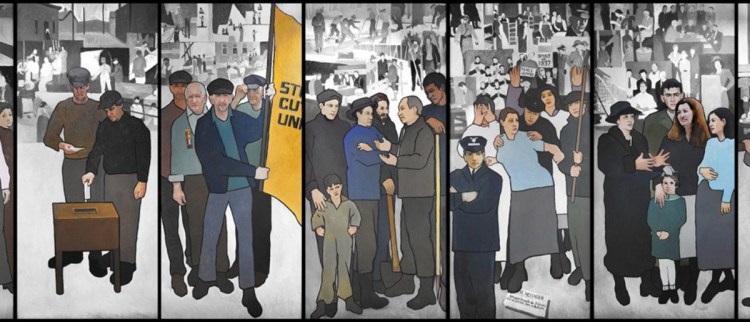For many of us, Labor Day is nothing more than a last long weekend before the kids go back to school. But according to the U.S. Department of Labor, the holiday was created by unions to pay “tribute to the contributions workers have made to the strength, prosperity and well-being of our country.”
Those of us who are lucky enough to get the day off might take a moment to reflect on how those workers are actually doing these days. It’s not as good as you might think.
Despite regular reports of a strong economy, characterized by one of the longest periods of sustained growth in history, a record-smashing stock market and the lowest unemployment rates in decades, the real picture is not reflected in the numbers.
Take economic growth, the rising tide that is supposed to lift all boats. The gross domestic product has been growing steadily since 2009, at an annual rate greater than 2 percent, climbing up over 4 percent one quarter this year. Good news, right? Well, it used to be.
PROSPERITY NOT SHARED
For most of the 20th century, the portion of GDP that was paid out in wages remained constant, about 64 percent, in both good times and bad. But that changed in the 1990s.
The share that goes out in paychecks has shrunk to 58 percent, which means that the piece of the pie that goes to wages has been shrinking even though the pie itself was getting bigger. The only people who saw any income growth that outpaced inflation during this historic expansion were in the top 10 percent of earners, with most of that going to the top 1 percent.
The other 90 percent were either treading water or falling behind.
This is important because the size of their paycheck is the primary way that most Americans experience economic ups and downs.
Few working people have income-producing investments; they depend on pay raises to increase their standard of living. Over the last decade, workers have not received their share of the country’s good fortune, but they will most certainly be made to pay the price when there is a recession. Perhaps the most troubling truth lurking behind the rosy statistics is the emptiness of the low unemployment rate as a measure of general prosperity.
About 12 percent of people with jobs fell below the official poverty line, about $12,000 for an individual or $20,000 for a family of three. But that doesn’t tell the whole story.
According to research by the United Way, about 40 percent of American working families could not pay for at least one basic necessity, including housing, transportation or medicine, during 2016. While not officially counted as “poor,” they are grouped by the study’s authors with the acronym ALICE for “asset-limited, income-constrained, employed.”
FAMILIES VULNERABLE
These families are under tremendous pressure. Student loan debt totals $1.5 trillion. Credit card debt has reached more than $1 trillion and is expected to increase 4 percent by 2020. Health care costs are projected to rise 20 percent next year, but wages have barely kept pace with inflation. One-third of American families have no savings, and another third have less than $1,000 in reserve. That means that millions of families are in constant danger of losing their dream of an economically stable middle-class life because of a medical emergency or an expensive car repair.
Promises for a better deal for workers were wrapped up in a deficit-busting tax cut, but they have predictably fallen short. Some enlightened corporate leaders have rightly seen income inequality and the struggles of the American worker as a threat to the nation’s strength, prosperity and economic well-being.
Which brings us back to the holiday observed on the first Monday in September. History shows that workers have been able to increase wages by organizing in unions and having their own representatives at the table when the economic pie is divided.
That’s something to consider this Labor Day.
Send questions/comments to the editors.


